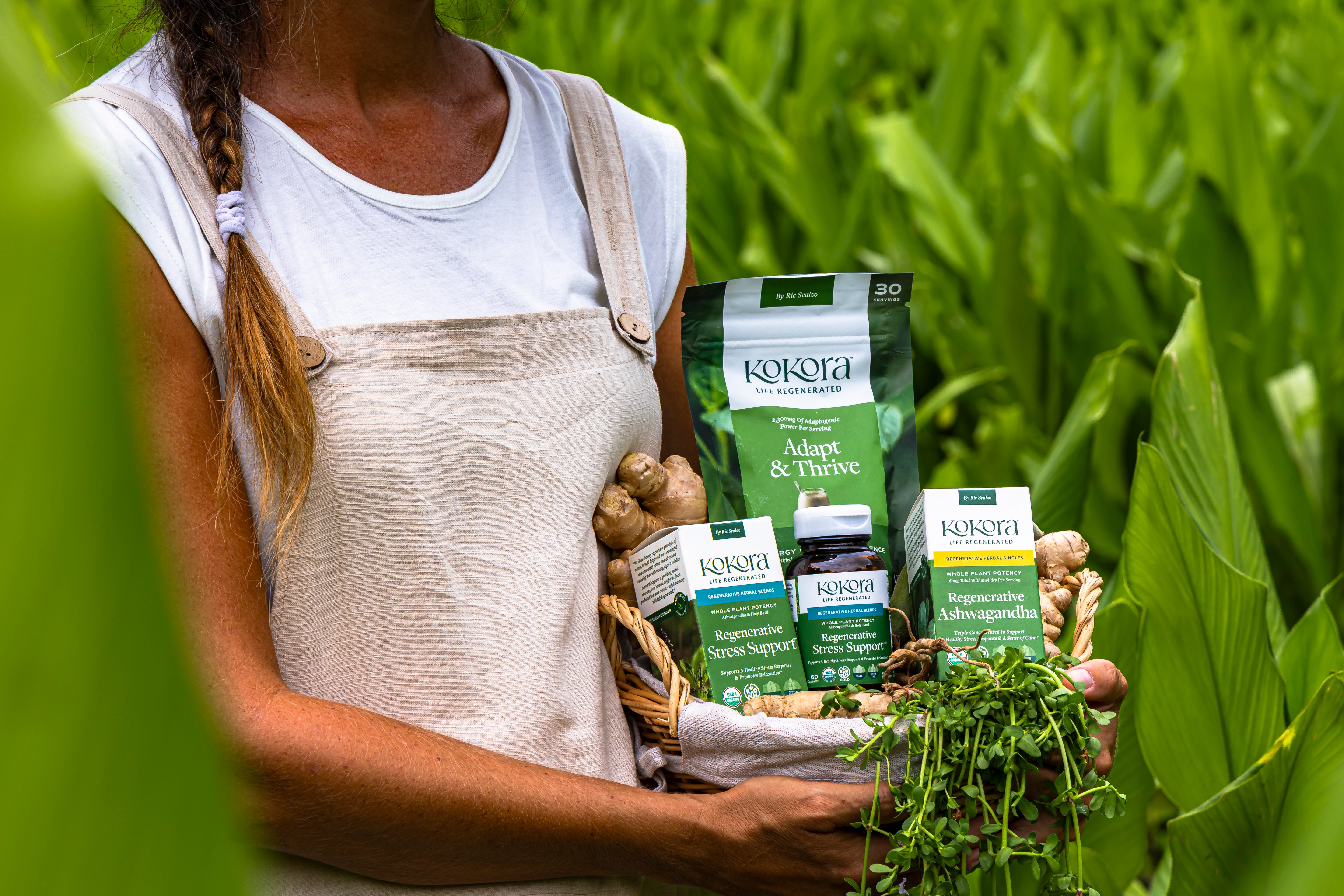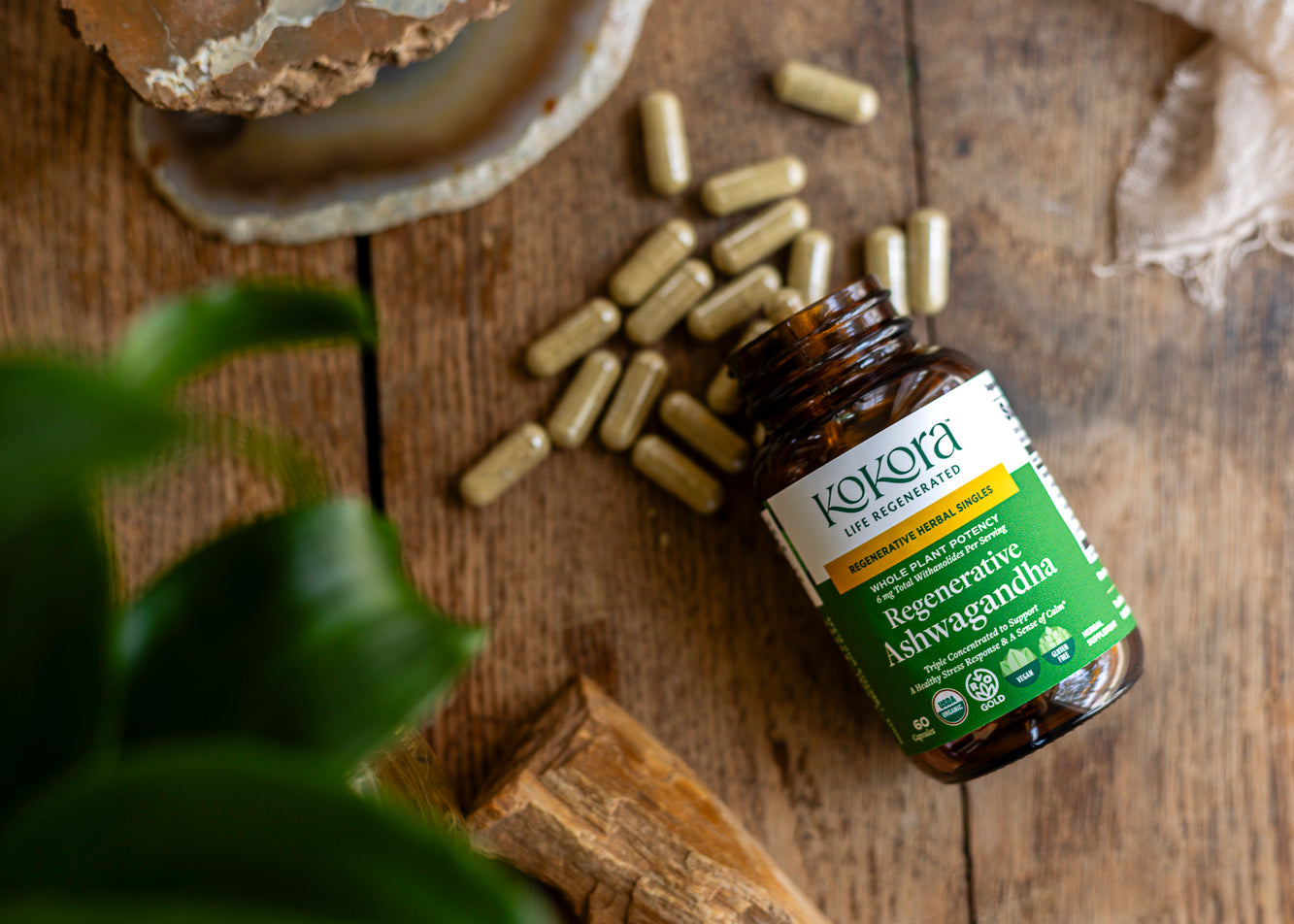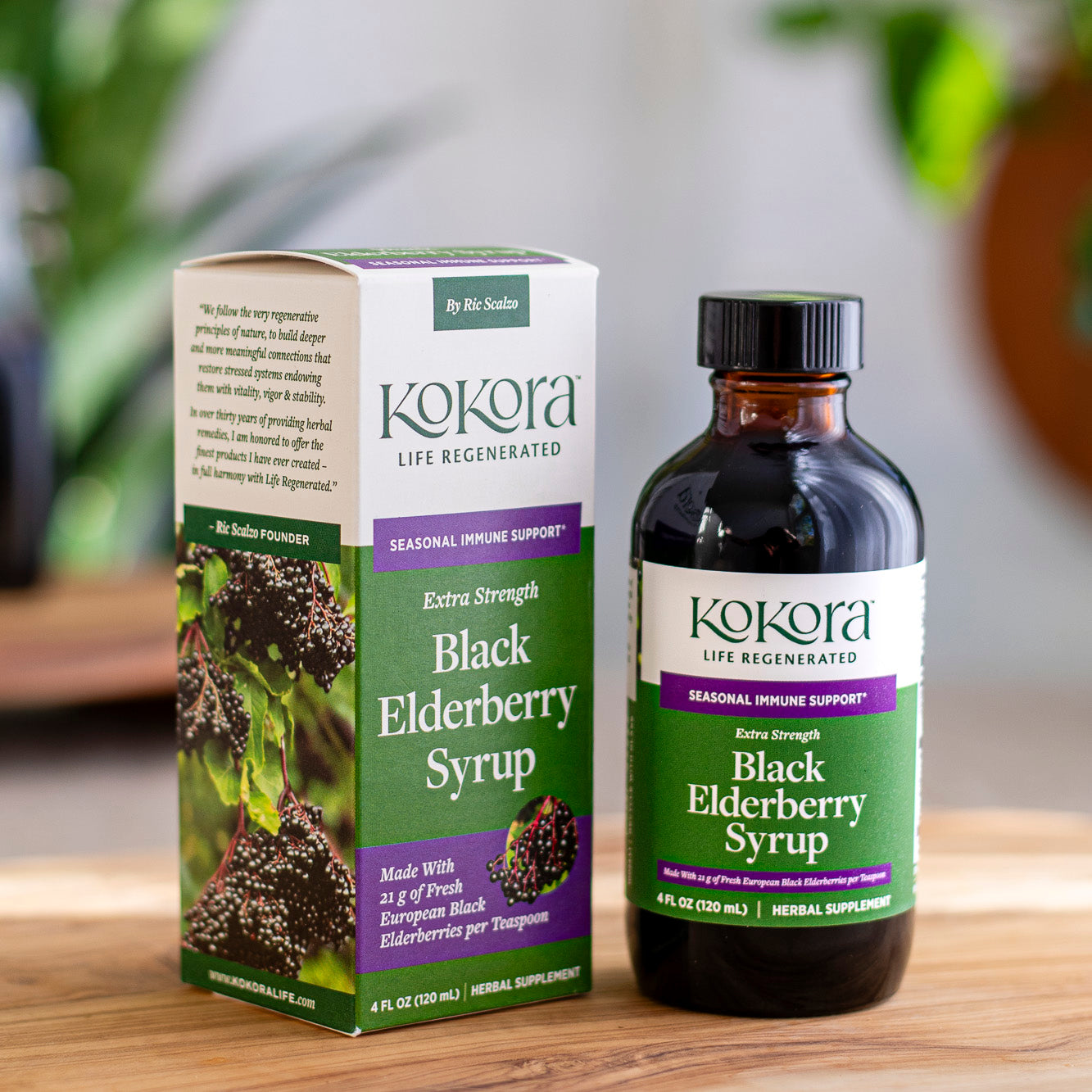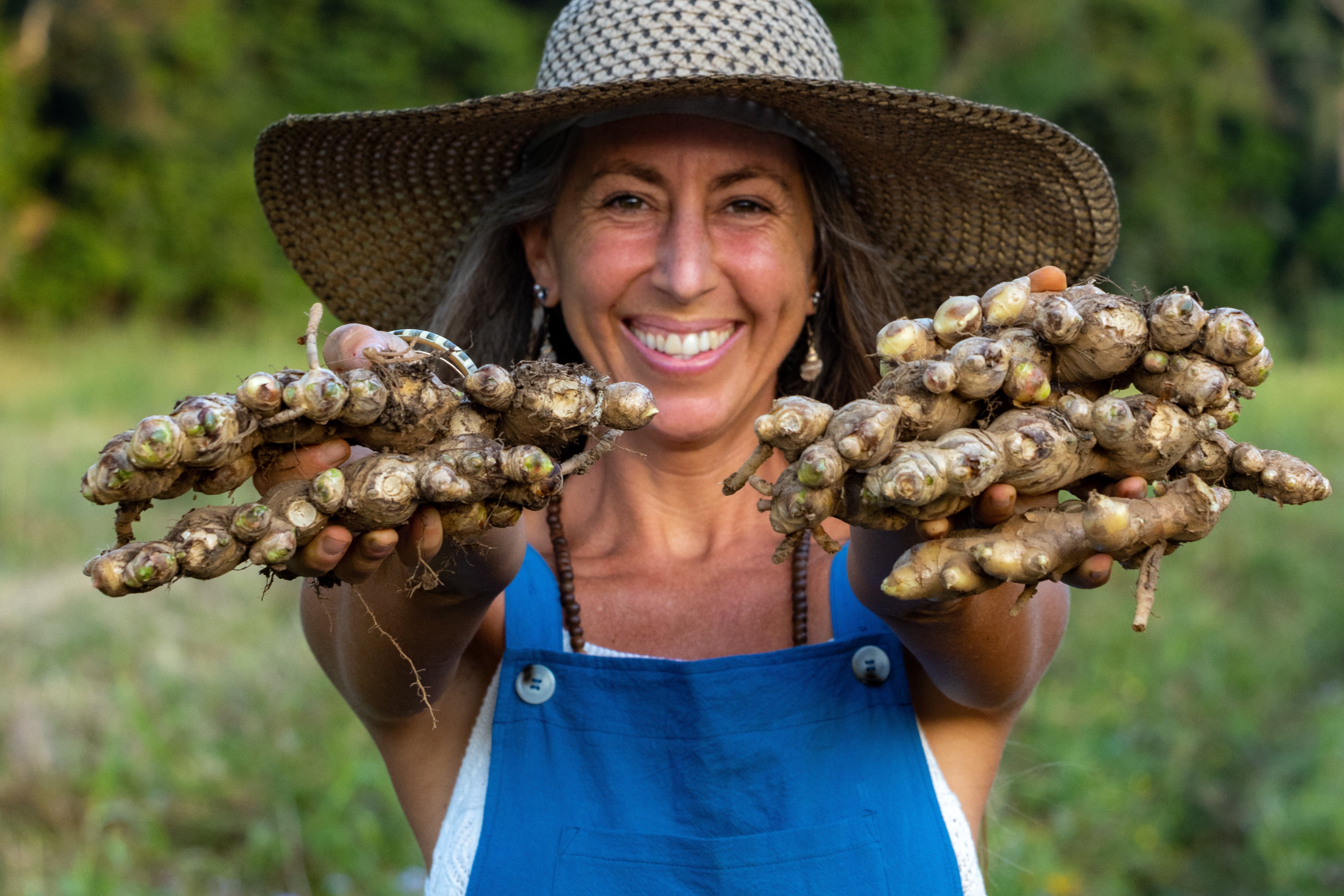There’s an unsung hero in the world of herbs that’s prized in Eastern practices and Asian cooking – Ginger (Zingiber officinale). With a history of use in Ayurveda, Traditional Chinese Medicine (TCM), and Asian cuisine spanning approximately 5,000 years, Ginger is a digestive staple that supports the middle and lower jiao in TCM (the digestive system and pelvic area) as an excellent ally for occasional nausea, digestive discomfort, excess mucous, menstrual stagnation, and the vascular system.*
Best of all – Ginger is tridoshic (all three doshas) in Ayurveda, meaning it can support pretty much everyone (except children, pregnant and nursing mothers, or those on medications), which is part of why it’s often included in a wide range of digestive formulas.
“Ginger is your true friend and ally,” says Ric Scalzo, founder of Kokora. “I love to take warm water and the juice of Ginger with honey every morning as a great way to support my health.”
We love Ginger so much that we decided to grow it on our Regenerative Organic Certified® (ROC) herb farm in Costa Rica, and we’ve blended this spicy, nourishing
root into many of our products.
Regenerating Life Under the Soil: Growing Ginger

Planted together: Ginger and Sunn hemp - fast friends in the field.
For tall and vibrant Ginger plants, we use regenerative organic growing practices. These farming techniques go far beyond organic. They involve collaborating with Nature to produce great products, help restore the soil for a healthier soil food web, and produce even more nutrient-dense herbs for optimal potency.
Considering how important Ginger is as a staple in so many herbal formulas, we knew that growing Ginger the regenerative organic way was critical.
“Growing Ginger is an art and a science,” says Ric. Here’s our step-by-step process for growing ROC Ginger.
Step 1: Prepare the Rhizomes
We start by breaking the Ginger fingers (rhizomes) off last year’s Ginger crop to plant. This creates a sustainable system, where our Ginger plants provide the stock for the following year’s crop.
Step 2: Prepare the Soil
When it’s time to plant the rhizomes in late March to early April, we treat the soil with homemade Mountain Microorganisms (MM), a natural organic fertilizer, to ensure good-quality microbiological activity.
To apply the MM, we use our Yeoman’s Plow—a plow with 24-inch shanks that opens the soil to 24 inches deep.
This is the phase when most farmers till the soil, which unfortunately disrupts the soil food web. Instead, we use the Yeoman’s plow to "inoculate” the soil substrate with the MM. This ensures the soil is rich and abundant with life while maintaining the soil structure.
Step 3: Spacing
To plant, we place the Ginger fingers eight inches apart in raised beds with two rows per bed. This begins their nine-month growth cycle.
Step 4: Invite Companion Plants
Ginger loves company, so we plant it with Sunn hemp (Crotalaria juncea), its favorite companion plant. Because Ginger is susceptible to soilborne pathogens that can create rot, companion planting offers a protective barrier. The Sunn hemp releases ammonium nitrate into the soil, which binds to the root structure of Ginger, promoting a surge of growth, including phytonutrient levels. This celebration of the soil food web promotes the development of fungi, beneficial bacteria, and increased nutrient activity.
Ginger loves well-drained soil, and the Sunn Hemp helps to absorb excess moisture. Allowing excess moisture to be absorbed has the added benefit of creating pathways in the soil for rainwater to drain properly, providing the roots with more space to expand and grow.
And finally, the Sunn Hemp also provides shade, which cuts back on the number of weeds that grow near the Ginger plants (and the amount of weeding our team needs to do!)
Step 5: Prepare for Harvest
Ginger harvest at our Costa Rican herb farm typically occurs in January or February, when the Ginger is finally ready to be harvested, cleaned, and carefully processed into powders or freeze-dried extracts for many of our products.

To ensure the vibrancy of our regeneratively grown, organic herbs and maintain high-quality products, we have invested in 304 stainless steel, pharmaceutical-grade equipment. This state-of-the-art equipment allows us to inject ozone into switched-out driers for enhanced cleanliness, and the stronger airflow helps to ensure proper sterilization under strict protocols.

Our founder, Ric Scalzo, in our Ginger processing center

Feeling inspired? Take this information home so you can grow Ginger in your own garden! Ginger grows best in climates with a long, warm growing season (USDA Hardiness Zones 8 - 12). But if you live in a cooler climate, you can grow it in containers and then bring it inside when the temperature drops.
Bringing Ginger into Your Daily Routine
Here are some easy ways to cultivate a deeper relationship with Ginger through your daily wellness routines.
• Begin your day with a Ginger cordial, a fantastic way to kickstart your Agni, an Ayurvedic term for “digestive fire.” Simply mix warm water, freshly grated ginger juice, and honey together and take it as a shot before your morning coffee alternative or breakfast.
• Make fresh Ginger tea: It's as simple as slicing or grating fresh Ginger, adding water, and bringing it to a boil. Let it simmer on the stove for 10-20 minutes. The longer you steep, the stronger your tea will be. Strain and serve.
• Add Ginger to cold water: Ayurveda and TCM teach that drinking iced liquids isn’t optimal for digestion. To warm things up, add a pinch of Ginger powder to your water to support your belly (plus, it’s great in smoothies, too!)*
• Incorporate our Adapt & Thrive™ or Immune Power™ functional powders into your daily routine, both of which contain Regenerative Organic Certified® Ginger from our Costa Rican herb farm and partner farms.
We hope these tips inspire you to lean on the magic of Ginger – whether it’s in your home garden or kitchen. Want to dive deeper? Listen to Ric on the “Honest Health” podcast with Dr. Jeffrey Burke on growing Regenerative Organic Certified® Ginger.
For more on the Soil Food Web, read these blog posts next:
Growing Ashwagandha: From Our Soil to Your Cup
Nature’s Power Duo for Stress and Immune Support: Ashwagandha & Super Mushrooms
A Healthy Gut Microbiome Relies on the Health of Our Soil
The Revolutionary Power of Regenerative Agriculture

Read more

Discover the wonderful world of Reishi mushroom benefits – from immune support to gut health.
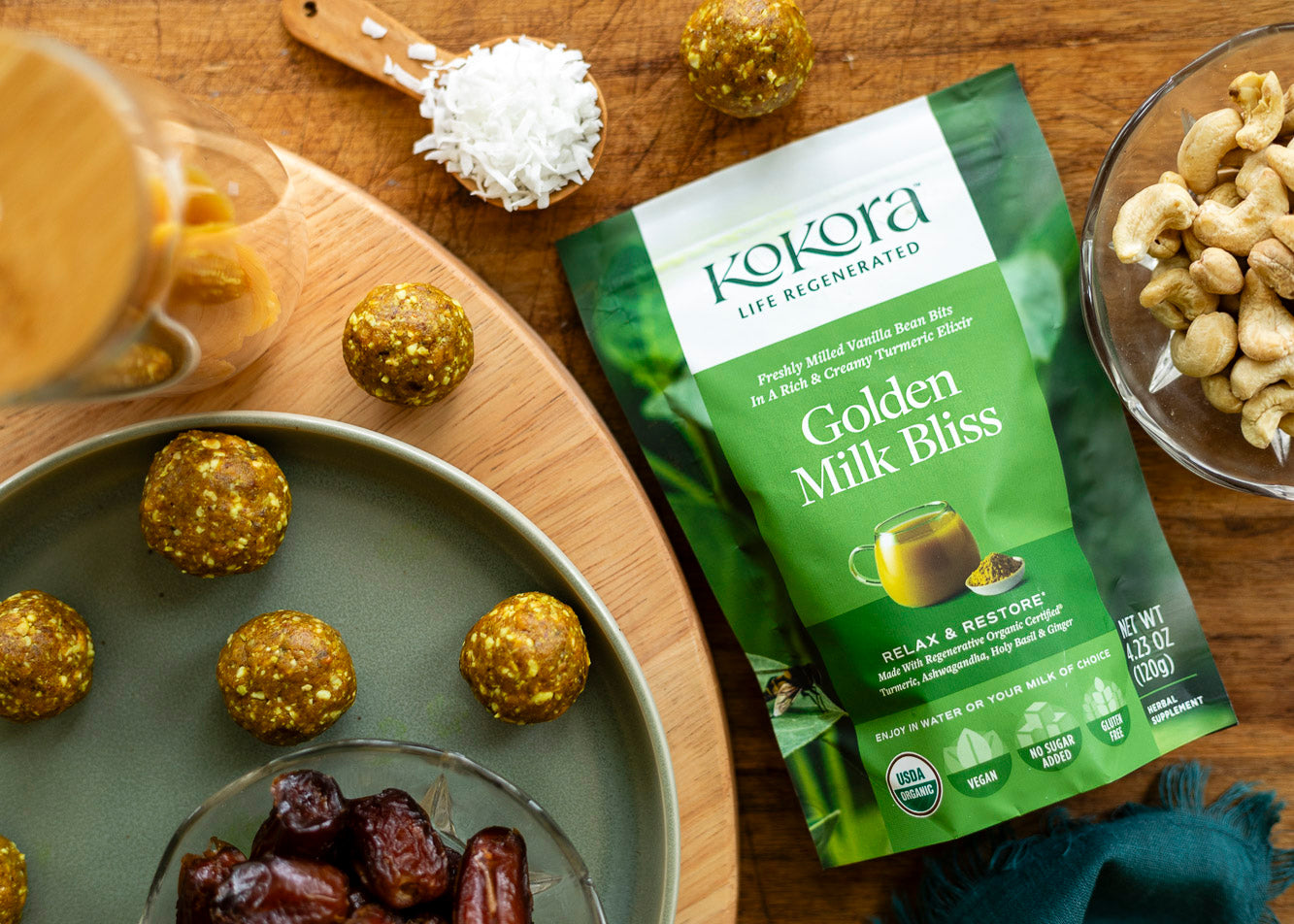
Enjoy this delicious vegan bedtime snack recipe with adaptogens for a restful night’s sleep.

